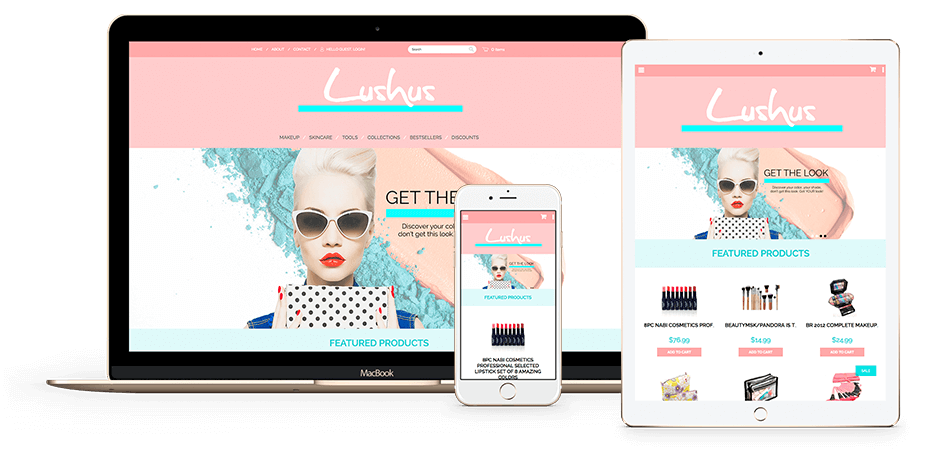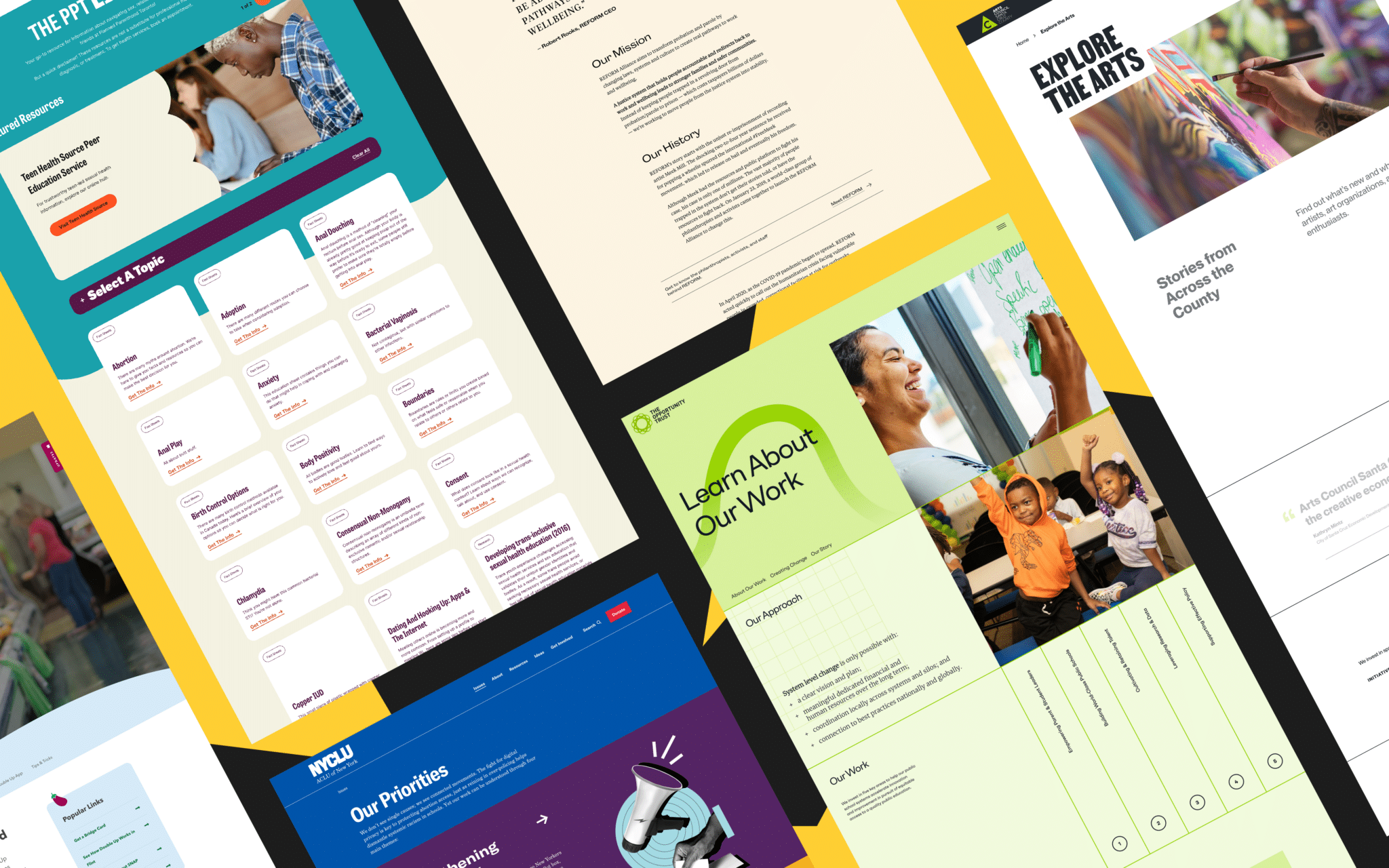Modern Website Layout That Captures Attention and Converts
In an increasingly electronic landscape, modern-day internet site layout has become an essential consider capturing individual attention and driving conversions. By tactically utilizing aesthetic pecking order, receptive layouts, and engaging interactive elements, developers can create experiences that not just attract site visitors however additionally facilitate purposeful interactions. Reliable call-to-action strategies play an important role in assisting users toward wanted end results. As we explore these essential elements, it becomes clear that understanding their interaction can considerably influence a website's efficiency and user contentment. What are the crucial elements that really make a distinction?
Significance of Visual Pecking Order
Aesthetic power structure is a vital aspect in website layout, as it guides customers' attention and improves their total experience. By strategically arranging content, developers can guide users to the most crucial information initially, thus increasing interaction and enhancing functionality.
Integrating a sensible flow in content plan is crucial; for example, positioning the most essential info on top of a page promotes prompt acknowledgment. Additionally, regular use of typography, such as differing font sizes and designs, helps develop a clear web content structure. This organization not only aids in navigating yet also develops trust fund, as individuals really feel more comfortable when they can easily locate what they are trying to find.
Ultimately, a well-executed visual power structure not just boosts visual appeal but likewise dramatically affects customer habits. By prioritizing crucial components and ensuring a seamless experience, designers can effectively convert site visitors right into clients, strengthening the importance of this foundational style principle in modern internet site development.
Responsive Layout for All Tools
Developing a seamless experience throughout various devices is essential in today's electronic landscape, where individuals accessibility websites from tablet computers, mobile phones, and desktops alike. Receptive design is a crucial approach that ensures internet sites adjust fluidly to various screen resolutions, alignments, and dimensions. By using adaptable grids, photos, and CSS media inquiries, designers can develop designs that maintain aesthetic stability and functionality, no matter the gadget being used.
The relevance of receptive design prolongs beyond aesthetics; it straight affects customer interaction and conversion prices. A website that operates well on all devices motivates longer gos to and minimizes bounce rates, as individuals are most likely to interact with material that is simple to navigate. Search engines, particularly Google, prioritize mobile-friendly websites in their rankings, making responsive style an essential part of search engine optimization (SEO)
Integrating receptive design not just improves individual experience however additionally enhances the advancement process. By developing a single website that works throughout tools, companies can conserve time and sources contrasted to developing different mobile and desktop computer versions. Ultimately, responsive design is an essential strategy for modern site style, making certain ease of access and satisfaction for all users, regardless of their gadget.
Engaging Interactive Aspects
While a receptive style lays the foundation for a useful website, integrating interesting interactive components is essential for catching customer interest and promoting deeper connections. Website Design. Interactive aspects, such as computer animations, tests, and clickable infographics, create a much more vibrant individual experience, urging visitors to invest even more time on the website
Integrating interactive functions can additionally lead users through complex information, making it easier to digest content. Interactive sliders can highlight product variants, while embedded videos can give presentations or testimonies that reverberate more than static photos or text. Gamification techniques, like benefits for completing jobs or engaging with web content, can improve user motivation and retention.
Reliable use interactive components not only enriches the customer experience however can additionally cause higher conversion rates. By making communications delightful and interesting, businesses can grow a feeling of commitment and trust with their target market. However, it is vital to stabilize interactivity with performance; excessively intricate features might impede website rate, negatively impacting individual complete satisfaction. Ultimately, incorporating properly designed interactive elements can substantially boost a site's efficiency, driving engagement and conversions in today's competitive digital landscape.
Streamlined Navigation Practices
Effective navigation is a cornerstone of any kind of effective internet site, as it straight affects user experience and material access. Structured navigation techniques ensure that customers over at this website can easily situate details, enhancing their communication with the website. A well-structured navigating menu need to be simple and intuitive, usually featuring a limited variety of main categories to prevent overwhelming visitors.
To attain structured navigation, designers ought to focus on a hierarchical structure that logically organizes web content. Applying breadcrumb tracks can offer customers with context about their existing place within the site, enabling smooth backtracking. Additionally, using drop-down menus can effectively conserve room while still supplying access to subcategories.
Receptive design is important, as navigation needs to be practical throughout all gadgets (Website Design). Mobile users, particularly, take advantage of touch-friendly menus and retractable sections that keep functionality without compromising visual appeals

Effective Call-to-Action Strategies
A well-crafted call-to-action (CTA) is important for assisting users towards desired end results on a website, as it encourages them to engage with material or purchase. To optimize their performance, CTAs must be clear, engaging, and purposefully placed throughout the site.
First, use action-oriented language that communicates seriousness or value, such as "Begin," "Join Currently," or "Claim Your Discount." This language not just motivates individuals but also establishes clear assumptions concerning the next steps.
Second, take into consideration layout elements; CTAs must stand out visually with contrasting colors, enough whitespace, and famous positioning. A button that is simple to see and click increases the possibility of individual interaction.
Additionally, individualizing CTAs based upon individual behavior or demographics can substantially boost involvement. Customized messages reverberate more with individuals, driving greater conversion rates.

Verdict
These parts collectively boost customer experience, making sure that site visitors remain engaged and inspired to discover web content even more. By prioritizing these layout concepts, companies go to this web-site can significantly enhance customer retention and conversion prices, ultimately leading to greater success in the electronic landscape.
In an increasingly electronic landscape, modern-day website design has actually emerged as an essential factor in catching customer interest and driving conversions.Visual power structure is an important component in site design, as it guides users' interest and enhances their general experience.The importance of responsive layout prolongs beyond visual appeals; it straight influences individual engagement and conversion rates.Including responsive design not just improves customer experience but also simplifies the development process. Ultimately, receptive design is a basic technique for contemporary web site style, guaranteeing accessibility and Learn More complete satisfaction for all individuals, no matter of their tool.